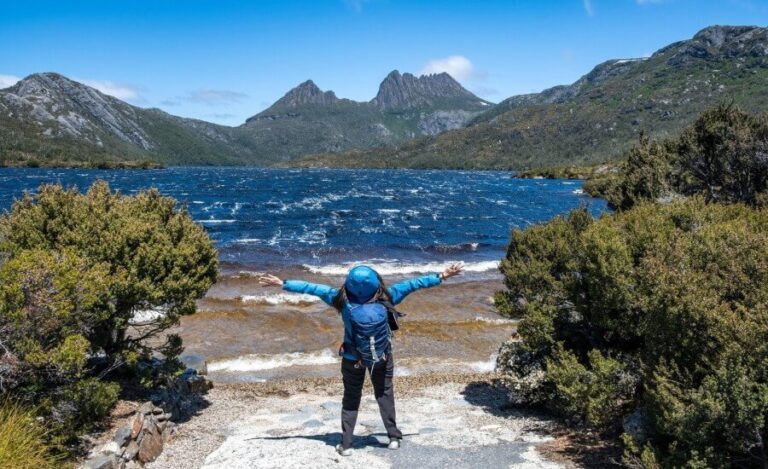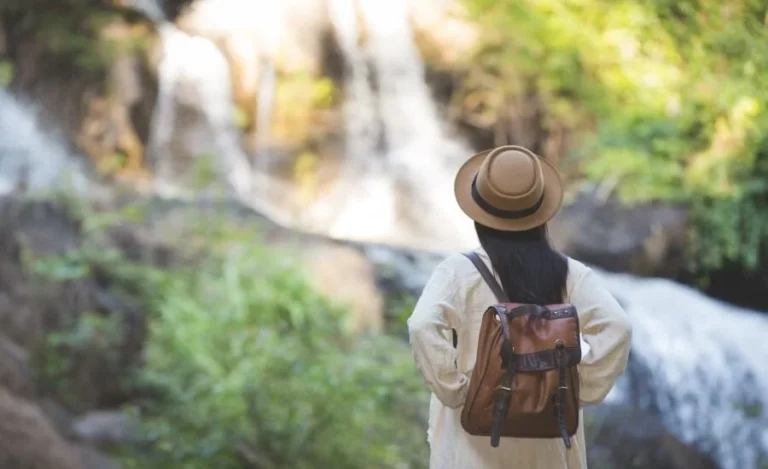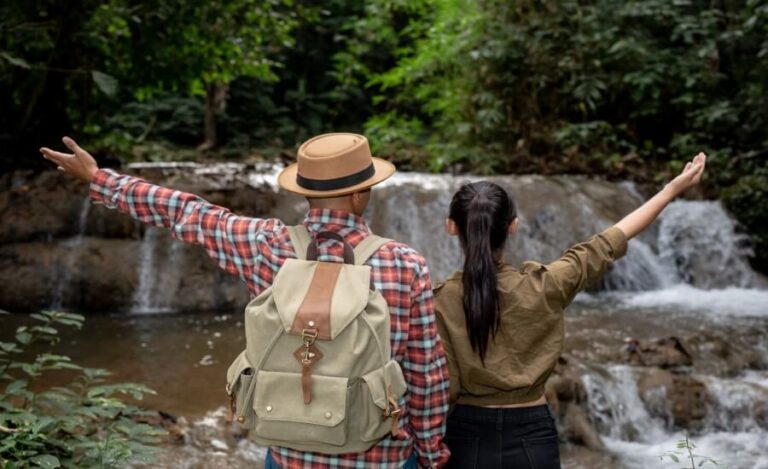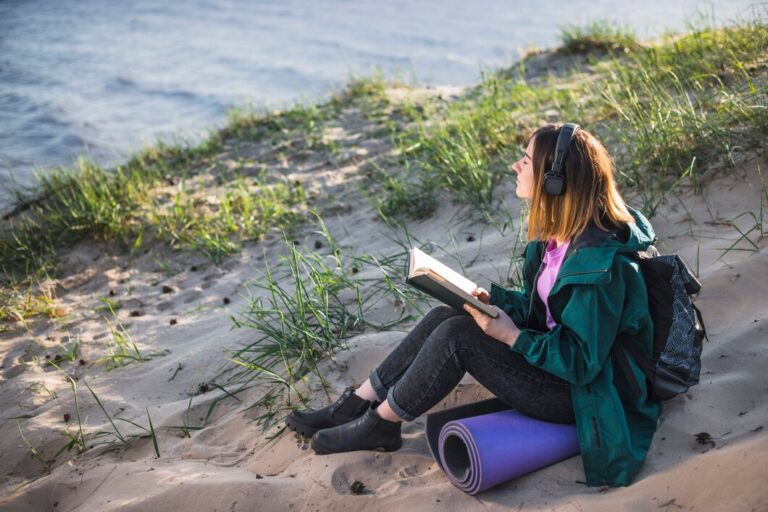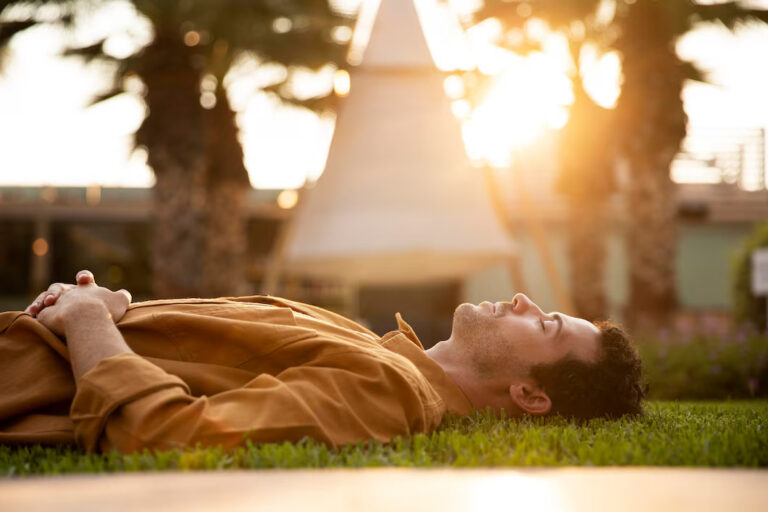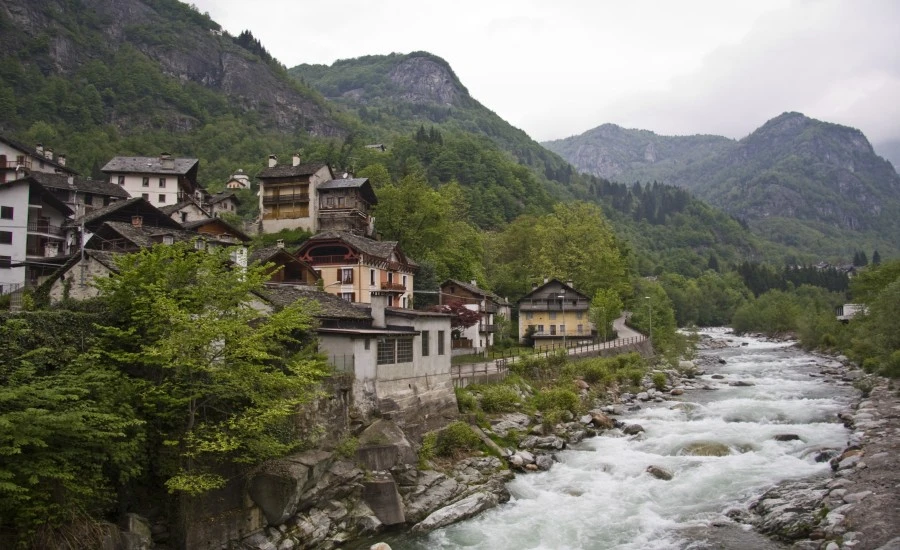
Tired of jostling through crowds at the Eiffel Tower or fighting for the perfect photo op at the Colosseum? While Europe’s iconic landmarks hold undeniable allure, a different kind of magic awaits those willing to venture slightly off the well-trodden tourist path. Imagine discovering hidden waterfalls cascading through emerald valleys, sharing stories with locals in charming, centuries-old villages, savoring unique flavors not found in standard guidebooks, and feeling the thrill of genuine exploration – often at a fraction of the cost.
This is the promise of offbeat Europe. It’s about trading overcrowded hotspots for authentic encounters, predictable itineraries for spontaneous discoveries, and superficial sightseeing for deep cultural immersion.
This guide unveils the ultimate offbeat europe Itinerary, focusing on the captivating Balkan Peninsula – a region brimming with stunning natural beauty, complex history, vibrant cultures, and fewer tourists. Get ready to explore countries less traveled, challenge your perceptions, and create truly unforgettable memories beyond the mainstream.
Beyond Paris & Rome: Why Explore Offbeat Europe?

Choosing to explore the less-traveled corners of Europe, particularly regions like the Balkans, offers a multitude of rewards that often surpass the experiences found in more popular destinations. Why detour from the usual suspects?
- Authenticity Unfiltered: Offbeat destinations often retain a stronger sense of local character and tradition, less diluted by mass tourism. You’re more likely to encounter genuine daily life, interact with locals beyond transactional tourism exchanges, and experience culture in its living form, not just as a performance.
- Fewer Crowds, More Peace: Escape the overwhelming throngs! Imagine wandering through ancient ruins, exploring stunning national parks, or relaxing in a charming town square without battling selfie sticks. Fewer crowds mean a more peaceful, personal, and mindful travel experience.
- Unbeatable Value: Generally, your travel budget stretches significantly further in less-visited European countries. Accommodation, food, activities, and local transport are often considerably cheaper than in Western European hubs, allowing for longer trips or more immersive experiences without breaking the bank. Daily budgets in many Balkan countries can be as low as $30-$60 USD.
- Unique Experiences & Bragging Rights: Discover landscapes, histories, and cultures your friends haven’t flooded Instagram with. From hiking pristine mountain ranges to exploring Ottoman-era bazaars or kayaking through fjord-like bays, offbeat Europe offers unique adventures and stories that stand out.
- Deeper Connection & Learning: Navigating areas with less tourist infrastructure encourages more interaction, problem-solving, and adaptability. It fosters a deeper engagement with the place and its people, leading to richer learning and personal growth. You move from being a passive tourist to an active explorer.
Exploring offbeat Europe is an investment in authentic, meaningful travel that often yields richer rewards than following the predictable path.
Crafting Your Adventure: Planning Your Offbeat Europe Trip

Planning a trip through less-traveled Europe requires a slightly different approach than booking a package tour to a major capital. It involves a bit more research, flexibility, and an adventurous spirit, but that’s part of the fun!
- Research is Key: Dive into blogs, forums (like Reddit travel communities), and guidebooks (even older ones can be good for cultural context) focusing on your chosen region (e.g., the Balkans). Look beyond the capital cities for smaller towns, national parks, and unique cultural sites. Websites like KimKim, Indus Travels, or local tourism boards offer itinerary ideas.
- Embrace Flexibility: Transportation schedules might be less frequent or predictable than in Western Europe. Accommodation options might be more basic in rural areas. Be prepared to adapt your plans if needed. This flexibility often leads to unexpected positive discoveries.
- Transportation Mix: Buses are king in the Balkans for inter-city and inter-country travel (check GetByBus, FlixBus where available, or local company schedules – often best checked/booked at the station). Trains are less common but exist on some routes (e.g., Slovenia, Croatia, the scenic Bar-Belgrade line). Renting a car offers maximum flexibility but check cross-border fees and road conditions. Walking and local transport are best within towns.
- Budget Wisely: While generally affordable, costs vary. Slovenia and coastal Croatia (especially in summer) are more expensive than Albania, Bosnia & Herzegovina, or Montenegro. Set a daily budget (research suggests $30-$70/day is feasible for budget/mid-range across much of the region). Utilize hostels, guesthouses (sobes/konobas), and apartments (Airbnb/Booking.com). Eat at local bakeries, markets, and simple restaurants.
- Pack Smart: Layers are essential as weather can vary. Comfortable walking shoes are non-negotiable. Pack light, especially if using buses. Include essentials like a basic first-aid kit, reusable water bottle (check water potability locally), universal sink stopper, and offline maps/phrasebook app.
- Mindset Matters: Approach your journey with curiosity, openness, and respect for local customs. Be prepared for language barriers (though English is common in tourist areas), embrace the differences, and enjoy the process of discovery.
The Ultimate Offbeat Europe Itinerary: A Balkan Journey

This suggested itinerary focuses on a journey through the heart of the Western Balkans, offering a stunning blend of alpine scenery, Adriatic coastline, fascinating history, and vibrant culture, while largely avoiding the biggest crowds (especially if traveling slightly off-season). This is a template – adjust timings based on your interests! Duration: Approx. 2-3 weeks.
The Route: Slovenia -> Croatia (Coastal & Inland Gems) -> Bosnia & Herzegovina -> Montenegro -> Albania
- Slovenia (3-4 Days): The Green Gem
- Start in Ljubljana: Explore the charming, walkable capital. Enjoy the riverside cafes, visit the castle, admire Plečnik’s architecture.
- Head to Lake Bled: Iconic, yes, but unmissable. Visit the island church, Bled Castle. Consider nearby Vintgar Gorge or the less crowded Lake Bohinj within Triglav National Park.
- Offbeat Element: Explore the Soca Valley (accessible from Bled/Bohinj area) for stunning turquoise water, hiking, and adventure sports, or visit the Škocjan Caves (UNESCO site, less famous than Postojna).
- Croatia (4-5 Days): Beyond Dubrovnik
- Travel down to the Istrian Peninsula: Explore charming hill towns like Grožnjan and Motovun (famous for truffles). Visit coastal towns like Rovinj or Pula (Roman amphitheater).
- Head inland to Plitvice Lakes National Park: Visit early/late or in shoulder season (Spring/Autumn) to mitigate crowds. Stunning waterfalls.
- Explore the Dalmatian Coast differently: Base in Zadar (unique Sea Organ) or Šibenik (gateway to Krka NP and islands) instead of only Split/Dubrovnik. Consider visiting less-famous islands.
- Bosnia & Herzegovina (3-4 Days): Culture & History
- Travel inland to Sarajevo: Immerse yourself in the captivating capital. Explore the Baščaršija (Old Bazaar), visit the Tunnel of Hope Museum, learn about its complex history, enjoy Bosnian coffee and Ćevapi.
- Journey to Mostar: Famous for the Stari Most (Old Bridge). Explore the Ottoman-era old town. Consider day trips to Blagaj Tekke (Dervish monastery by Buna spring) or Kravice Waterfalls.
- Montenegro (3-4 Days): Mountains & Fjords
- Head south to the Bay of Kotor: Explore the fortified town of Kotor (UNESCO). Visit picturesque Perast and take a boat to Our Lady of the Rocks.
- Venture into the mountains: Explore Lovćen National Park (Njegoš Mausoleum views) near Cetinje (historic capital) or head north to Durmitor National Park for dramatic hiking and the Tara River Canyon.
- Albania (3-4 Days): Emerging Gem
- Cross into Albania. Explore the Albanian Alps in the north (Theth/Valbona valleys – requires more time/planning for hiking) OR head south along the Albanian Riviera.
- Discover coastal towns like Himarë or Saranda (gateway to Butrint archaeological site – UNESCO).
- Visit UNESCO towns like Berat (‘City of a Thousand Windows’) or Gjirokastër (‘City of Stone’) for unique Ottoman architecture.
This itinerary offers a mix of nature, culture, history, and coastlines, moving through progressively less-touristed (and generally more affordable) countries.
Itinerary Deep Dive: Highlights & Hidden Gems

Let’s zoom in on some specific experiences within our suggested Balkan route that truly capture the offbeat spirit:
- Slovenia: Beyond Bled’s iconic island, hike a portion of the Juliana Trail around Triglav National Park, raft or kayak the intensely turquoise Soca River, or delve into the vast underground world of the Škocjan Caves, a less crowded but equally impressive alternative to Postojna. Explore the wine regions near Maribor in the east.
- Croatia: Instead of island-hopping the most famous spots, explore Mljet National Park (a large island with saltwater lakes), visit the quieter islands of Vis or Lastovo, or hike in Paklenica National Park near Zadar. Discover Istria’s inland villages known for truffles and wine, far from the coastal bustle.
- Bosnia & Herzegovina: In Sarajevo, take a cooking class to learn Bosnian cuisine or explore the abandoned 1984 Winter Olympics Bobsleigh Track. Near Mostar, visit the stunning Kravice Waterfalls for a swim (less known than Croatia’s Plitvice/Krka) or the historical town of Počitelj. Explore Una National Park for pristine rivers and waterfalls in the northwest. Consider a visit to Jajce with its impressive waterfall right in the town center.
- Montenegro: Hike the ladder of Kotor for breathtaking bay views without the cruise ship crowds found below. Explore the vastness of Durmitor National Park – hike around the Black Lake, drive the scenic Sedlo Pass. Discover the charm of Cetinje, the old royal capital, or take a boat trip on the vast Lake Skadar, bordering Albania, known for its birdlife.
- Albania: Hike between the remote mountain villages of Theth and Valbona in the Albanian Alps (requires fitness and planning). Relax on the less developed beaches of the Albanian Riviera south of Vlorë (like Dhërmi or Himarë). Explore the unique architecture and atmosphere of Berat and Gjirokastër (UNESCO sites) offering a glimpse into Ottoman history. Visit the ancient ruins of Butrint near Saranda.
These highlights offer a taste of the unique beauty and experiences waiting beyond Europe’s main tourist circuits.
Practicalities & Tips for Navigating Less Traveled Paths

Navigating offbeat Europe, especially the Balkans, is part of the adventure. Here are some practical tips:
- Transportation: Buses are the most common mode of transport between cities and countries. Be prepared for varying levels of comfort and adherence to schedules. Buy tickets at the station when possible. Check sites like GetByBus, but local knowledge is often key. Trains are limited but useful in Slovenia/Croatia. Car rentals offer flexibility but check cross-border policies/fees and road conditions.
- Border Crossings: Remember you’ll be crossing multiple borders (some Schengen, some not). Keep your passport easily accessible. Allow extra time, especially when traveling by bus, as checks can sometimes be lengthy.
- Visas (Crucial for Indian Citizens): This is complex and requires careful, up-to-date checking.
- Slovenia/Croatia: Require a Schengen Visa.
- BiH, Montenegro, Albania: Have varying rules. They may allow entry visa-free for short stays if you hold a valid multiple-entry Schengen visa (already used) or potentially US/UK visas/residence permits. however, rules change. ALWAYS check the official embassy websites for each specific country well in advance for the latest requirements for Indian passport holders. Do not rely solely on third-party information.
- Currency: Slovenia and Croatia use the Euro. Bosnia uses the Convertible Mark (BAM), Montenegro uses the Euro (unofficially), Albania uses the Lek (ALL). Have some cash on hand, especially in smaller towns, although ATMs are widely available in cities. Credit cards are accepted in larger establishments but less so in rural areas.
- Language: English is commonly spoken in tourist areas and by younger generations. However, learning basic phrases in local languages (Slovenian, Croatian/Bosnian/Serbian/Montenegrin – very similar, Albanian) like “Hello” (Zdravo/Dobar Dan/Mirëdita), “Thank You” (Hvala/Faleminderit), “Yes/No” (Da/Ne / Po/Jo) shows respect and can be very helpful. Download offline translation apps.
- Connectivity: Wi-Fi is common in accommodations and cafes in cities. Consider getting a local SIM card or an eSIM for cheaper data on the go, especially for navigation and communication.
A little preparation makes navigating these diverse countries much smoother.
Common Concerns & Solutions

Venturing off the beaten path can bring some anxieties. Here’s how to handle common concerns:
- Concern: “Is it safe?”
- Solution: The Balkan region is generally considered safe for tourists. Exercise standard precautions as you would anywhere: be aware of your surroundings, secure valuables (especially against pickpockets in crowded areas), avoid unlit areas at night, and use reputable transport. Violent crime against tourists is rare. Be aware of landmine risks only in very specific, remote, uncleared border areas related to past conflicts – stick to roads and marked trails. Check current travel advisories.
- Concern: “What about language barriers?”
- Solution: English is widely understood in tourism contexts. Download offline translation apps (like Google Translate). Learn a few basic phrases – it goes a long way! People are generally helpful; don’t be afraid to use gestures or point politely if needed.
- Concern: “Will there be enough tourist infrastructure (ATMs, accommodation, info)?”
- Solution: Major towns and cities have ample infrastructure. In more rural or offbeat areas, ATMs might be less frequent (carry some cash), and accommodation simpler (guesthouses, homestays). Tourist information offices exist in main towns. Embrace the occasional lack of convenience as part of the adventure – it often leads to more authentic experiences. Download offline maps (Maps.me, Google Maps offline).
- Concern: “How do I get around easily?”
- Solution: As mentioned, buses are the primary mode. It requires some patience and planning. Ask locals or hostel staff for advice on routes and schedules. If time is limited and budget allows, renting a car provides the most freedom, but be prepared for varied road conditions.
Embrace challenges with a positive attitude and resourcefulness!
Before You Go Offbeat: The Essential Checklist

Preparing for an offbeat European adventure requires a slightly different checklist:
- Visas Checked & Secured: Crucial! Verify CURRENT visa requirements for YOUR passport for EVERY country on your itinerary via official embassy websites. Apply well in advance if needed.
- Flexible Itinerary Drafted: Have a plan, but be willing to adapt it.
- Budget Set & Funds Accessible: Realistic daily budget, mix of cash (local currency where needed) and cards. Inform your bank of travel plans.
- Offline Maps & Translation Downloaded: Essential for areas with limited connectivity.
- Basic Phrases Learned/Saved: Key greetings, thank you, numbers.
- Transportation Research: General idea of bus routes/companies or car rental booked.
- Accommodation Booked (First Few Nights): Secure initial stays, research options for later.
- Pack Light & Appropriately: Versatile layers, comfy shoes, essentials only.
- Travel Insurance Purchased: Comprehensive coverage is vital.
- Open & Respectful Mindset Packed: Ready for cultural differences, potential challenges, and unexpected wonders.
Conclusion: Discover the Undiscovered Europe

There’s a unique magic in stepping off the conveyor belt of mass tourism and forging your own path. Exploring the less-traveled countries of Europe, like the captivating nations of the Balkan Peninsula, offers a journey rich in authenticity, stunning beauty, profound history, and genuine human connection. It’s a chance to escape the crowds, stretch your budget, challenge yourself, and return with stories few others can tell.
The Ultimate Offbeat Europe Itinerary is less about a rigid plan and more about an invitation – an invitation to embrace curiosity, welcome spontaneity, and discover the incredible diversity that lies just beyond the familiar headlines.
From Slovenia’s emerald rivers to Albania’s rugged coastlines, this corner of the continent promises an adventure that engages the senses and nourishes the soul. Dare to explore beyond the postcard views. Start planning your own journey into the heart of hidden Europe. The rewards are immeasurable.
